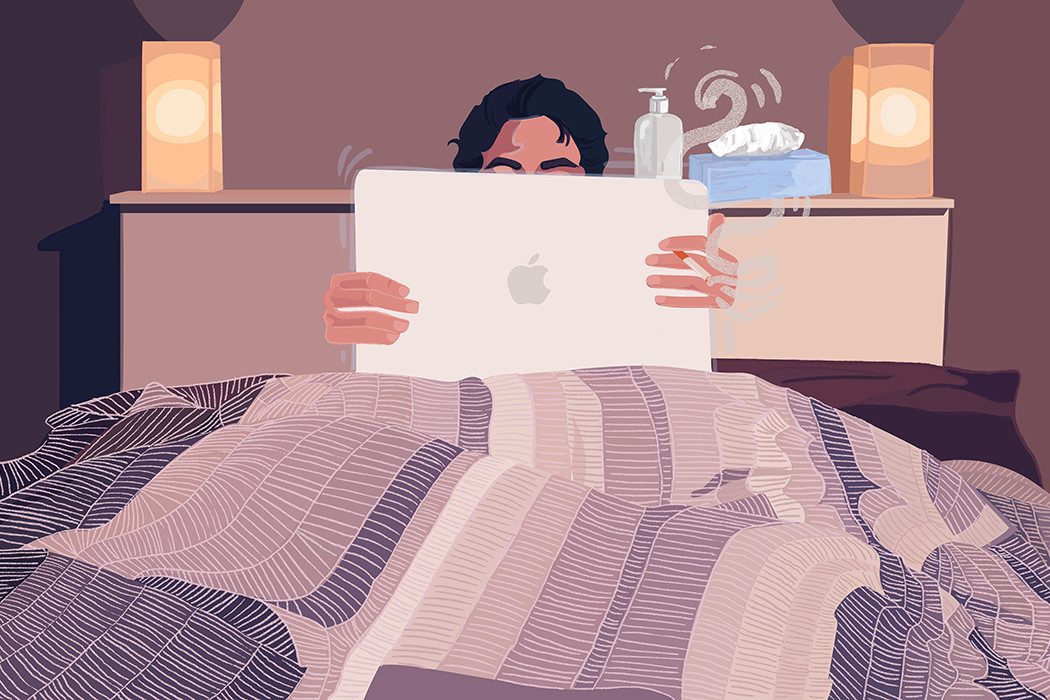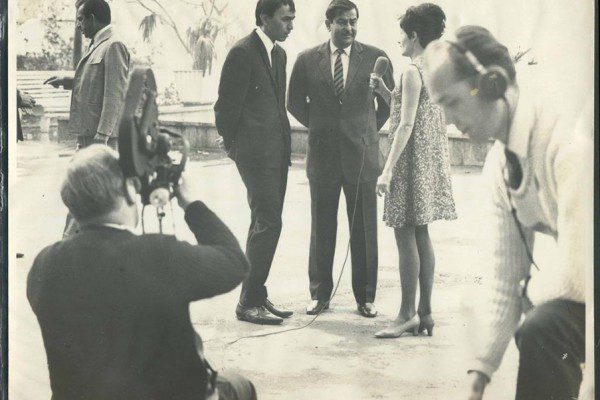Kanchan Bandyopadhyay argues that banning pornography is warranted on public health and economic grounds.
On 3 August 2015, the Department of Electronics and Information Technology asked the Department of Telecom to notify Internet service providers to block access to 857 URLs on the grounds of decency and morality, as stated in Article 19(2) of the Indian Constitution.
Before I delve into this further, let’s get a few things out of the way. I am not a prude. I love a free and open Internet. I do not believe that the government should exercise the right to censorship freedom of speech and the right to access information.
I am also not a killjoy.
But after considering the issue more fully, I find myself agreeing wholeheartedly with the government intervention, although I doubt that banning 857 websites out of over 42,000—a conservative estimate—is really going to help.
After all, if a government really wanted to ban things on a moral basis, anything bearing Salman Khan should be on this list.
But I digress.
I am not a prude. I love a free and open Internet. I do not believe that the government should exercise the right to censorship freedom of speech and the right to access information. I am also not a killjoy.
Nearly all the argument and commentary post this decision tends to focus on objections of freedom of speech or a reason to discuss the motives of the governing party.
The day after the ban, the Guardian published a piece by Sonia Falero, which said:
In an attempt to mislead people into believing that it is in fact the government’s duty to regulate the internet, government sources have justified the porn ban as necessary to curb child abuse. But the BJP’s trademark lack of focus has led to mixed messages even here. Some government sources say the ban was necessary on “grounds of morality and decency”. Others describe porn as a “social nuisance”. Several of the banned websites aren’t even pornographic.
It additionally quoted Chief Justice HL Dattu, who called a ban on porn a “violation of Article 21” on the right to personal liberty. He said adults had a right to watch porn “within the four walls” of their home.
Even a number of my female friends have bemoaned the fact that India is getting tough on fun and enjoying life. One comment was, “We are becoming an over-sensitive nation that has lost its ability to enjoy the finer things in life.” Another—“First alcohol, then beef and now sex.”
To be fair, until 4 August, I hadn’t given online pornography, or the new ban, much thought until I came across an alarming statistic.
Indian telecoms—vehemently against this decision, of course—stated that 70 percent of income from data services is from the downloading, distribution and streaming of porn content.
70 percent.
One company reported a two-fold jump in its profit at Rs 1,436.50 crore for the three months ended December 2014. This equates to Rs 1,006 crore devoted entirely to the consumption of online porn.
One company, on its own, reported a two-fold jump in its profit at Rs 1,436.50 crore for the three months ended December 2014. This equates to Rs 1,006 crore devoted entirely to the consumption of online porn.
10,00,60,00,000 rupees.
Looking at this as a purely economic construct, we need to ask—is an economically responsible government one that encourages consumers to spend their money in this manner? Definitely not.
Irrespective of the income band this amount of spending on pornography equates to that amount not being spent on clothing, healthcare, education, housing or food.
It should have been classed as a major economic issue stopping India from moving forward, not as a moral hazard.
To only limit online porn as a moral or economic issue for India, however, would ignore it as a major public health issue.
Because even when pornography is viewed objectively, evidence indicates that it does indeed cause harm in humans with regard to pair-bonding.[1]
Porn interferes with bonding, relationships.
Furthermore, the American Psychiatric Association found that health outflow of compulsive pornography viewing can lead to Hypersexual Disorder. Sufferers experience love and sexuality in perverse and violent qualities that they cannot integrate with the tender, intimate side of relationships.[2]
It should have been classed as a major economic issue stopping India from moving forward, not as a moral hazard.
Viewing too much porn can kill relationships.
But a little porn is harmless right?
What about the 70 percent of our time that we (as a nation) spend on Internet porn?
But this is not really about a nation, because porn is created for men.
Internet pornographers have devised amazing marketing techniques to attract and ensnare the male market; capitalising on the unique aspects of the male brain.
Most Internet porn geared to the male market shows the “man in control”. The female is “servicing” the male, subservient to whatever he wants done to him or to whatever he wants to do to her.
Most Internet porn geared to the male market shows the “man in control”. The female is “servicing” the male, subservient to whatever he wants done to him or to whatever he wants to do to her. And she is nearly always shown as completely lusting after him and enjoying every moment of their sexual activities, even though in real life many of these activities would be painful and/or distasteful to most wives and girlfriends.
The quality of marketing techniques used by the porn industry is something to behold. Just like the tobacco scientists, advertisers, cinema companies, media and lobbyists of the 1960s and 1970s used all their skills to increase consumption of smoking and to normalise it, internet pornographers have done the same.
And given that men represent the vast majority of those diagnosed with Hypersexual Disorder, it is right for the Indian government to intervene now, because the other methods of public health management don’t apply.
Because, until recently, porn was like smoking.
People smoke cigarettes. We crave the nicotine and the short-term rush smoking gives us.
Given that men represent the vast majority of those diagnosed with Hypersexual Disorder, it is right for the Indian government to intervene now, because the other methods of public health management don’t apply.
Like most of my friends, smoking started with a harmless few “social ciggies” when we were young and foolish. And then before we knew it, some of us were hooked.
So now, when we run out of cigarettes, we have to drive to the local smoke-wallah, far away from home (so our uncles, aunts and other members of our family don’t happen to see us). We look around, speak quickly and get a packet of our addiction.
It takes a lot of time and effort. Additionally, we have to fork out the cash (much more than it was last year) and come rain or shine, go through the collection ordeal every time.
Once in a while we’ll even notice the smoke-wallah shooing a kid away who wants to buy a stick.
In the pre-Internet days, there was similar process when people tried to buy porn. Society had set some rules about where it could be sold and who could buy the magazines and videos.
Like smoking today, you couldn’t just buy it anywhere. Magazines and videos could only be purchased/rented in “certain stores by people above a certain age”. Once one knew where to go, the actual thought of looking into the eyes of the salesperson (hopefully not a woman) in a shop would be quite daunting and the purchaser would question whether the “harmless fun” was worth the stress.
The Internet is here; it doesn’t judge; it doesn’t monitor consumption. It certainly does not monitor overconsumption.
In many cases, it wasn’t.
However, time has moved on. The Internet is here; it doesn’t judge; it doesn’t monitor consumption.
It certainly does not monitor overconsumption.
But, as we sit on our smartphones, in the lounge room, or the back seat of the car, can anyone really see what we’re watching?
No one tends to look over one’s shoulder when someone is close by on their phone. HL Dattu discusses the four walls—he’s talking about his college days.
Porn is no longer “within four walls”. Pornhub, the world’s 72nd most visited site and undoubtedly the world’s largest free online porn aggregator, reported in 2014 that India was its fifth largest market.
Smartphones and tablets have added another dimension where we don’t even have to sit at the family computer to access sex online, or worry about where to “hide the magazine”.
Smartphones and tablets have added another dimension where we don’t even have to sit at the family computer to access sex online, or worry about where to “hide the magazine”. We can now get our online fix anytime, anywhere.
Amid the uproar, on 5 August, the government reversed its decision. And for those celebrating this “win for freedom”, consider the following: the next time you see a group of guys sitting in the park what are they likely to be watching?
What will be the economic, health or social argument for Eve-teasing brought on by hypersexual disorder?
You see, we can’t have it both ways.
—
[1] Bergner RM, Bridges AJ. The significance of heavy pornography involvement for romantic partners: Research and clinical implications. J Sex Marital Ther. 2002;28:193–206
[2] Mitchell, Stephen (1995). Freud and Beyond: A History of Modern Psychoanalytic Thought. New York: Basic Books.


